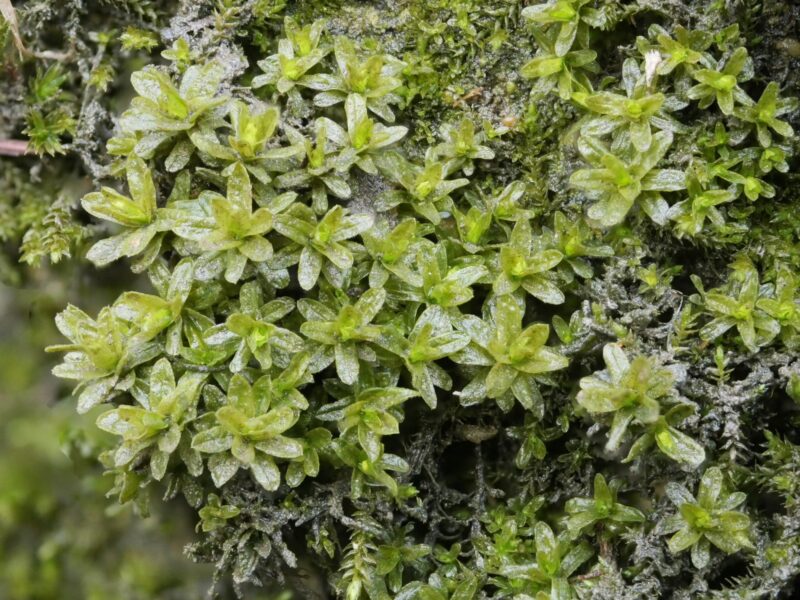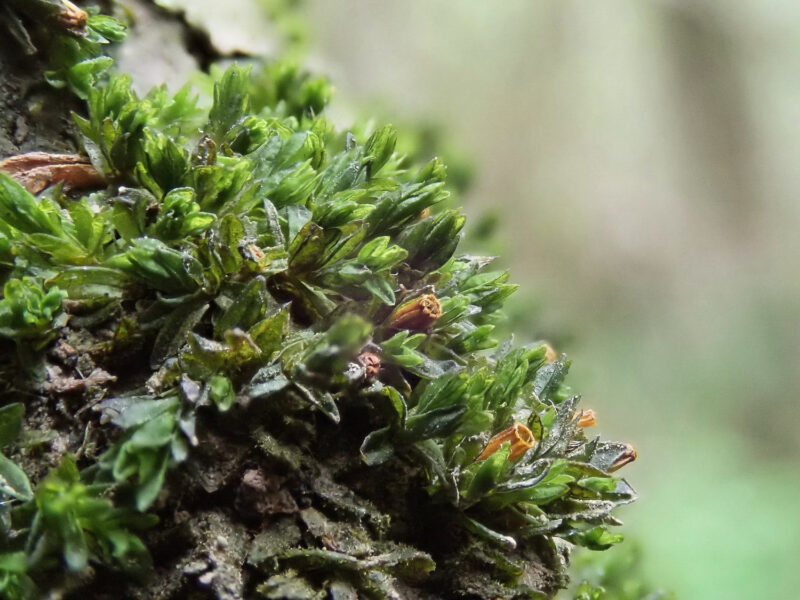Identification notes
Despite having relatively large leaves, this can be an inconspicuous plant as it is a rather dull green with leaves that are incurved and pressed towards the stem unless moist. In its typical habitat of tree bases in the inundation zone of rivers it is usually encrusted with silt, although the large cushions are quite characteristic. Once cleared of silt the leaves are seen to be broad, spathulate and rather floppy, with the nerve barely excurrent and often ending below the apex. They can look like tiny cabbages. The leaves have a dull surface from a dusting of gemmae.
Away from rivers it can be found on roadside trees or other dusty places where the leaves receive a spattering of gritty particulate matter. Occasionally it can be found on damp decaying concrete and, increasing, on old fracturing tarmac. In these unexpected habitats it can be perplexing until it is recognised as a possibility. It presents no difficulties under the microscope.
Read the Field Guide account

















